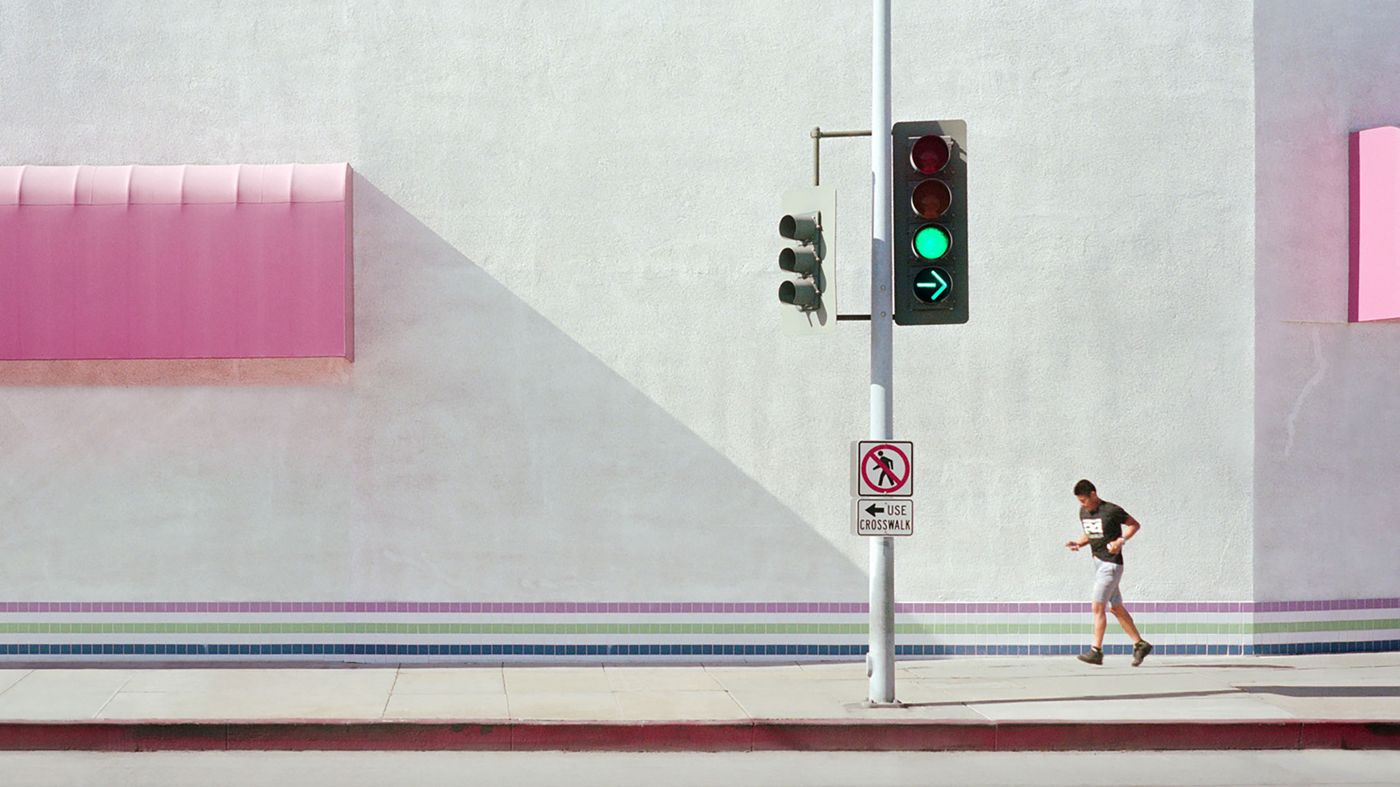
Post Truth: George Byrne's Photographic Love Letter to the Understated Beauty of Los Angeles
Words by Eric David
Location
Los Angeles, United States
Post Truth: George Byrne's Photographic Love Letter to the Understated Beauty of Los Angeles
Words by Eric David
Los Angeles, United States
Los Angeles, United States
Location
Sometimes it takes an outsider to reveal the hidden beauty and capture the true essence of a place so it’s only fitting that a new photographic series depicting the gritty urbanism of Los Angeles in sublime otherworldliness is the work of an Australian rather than an Angeleno photographer. Sydney-born George Byrne moved to Los Angeles ten years ago as an aspiring musician and was instantly transfixed by the sprawling cityscape, mesmerized by the way the relentless sunlight transformed it into two-dimensional, painterly abstractions. “It felt free, wild, and open,” he remembers. Driven by curiosity rather than design, as if the streets were calling out for him, he started photographing overlooked urban spaces: raw street observations at first taken with his iPhone which gradually became calculated compositions shot with medium-format film cameras.
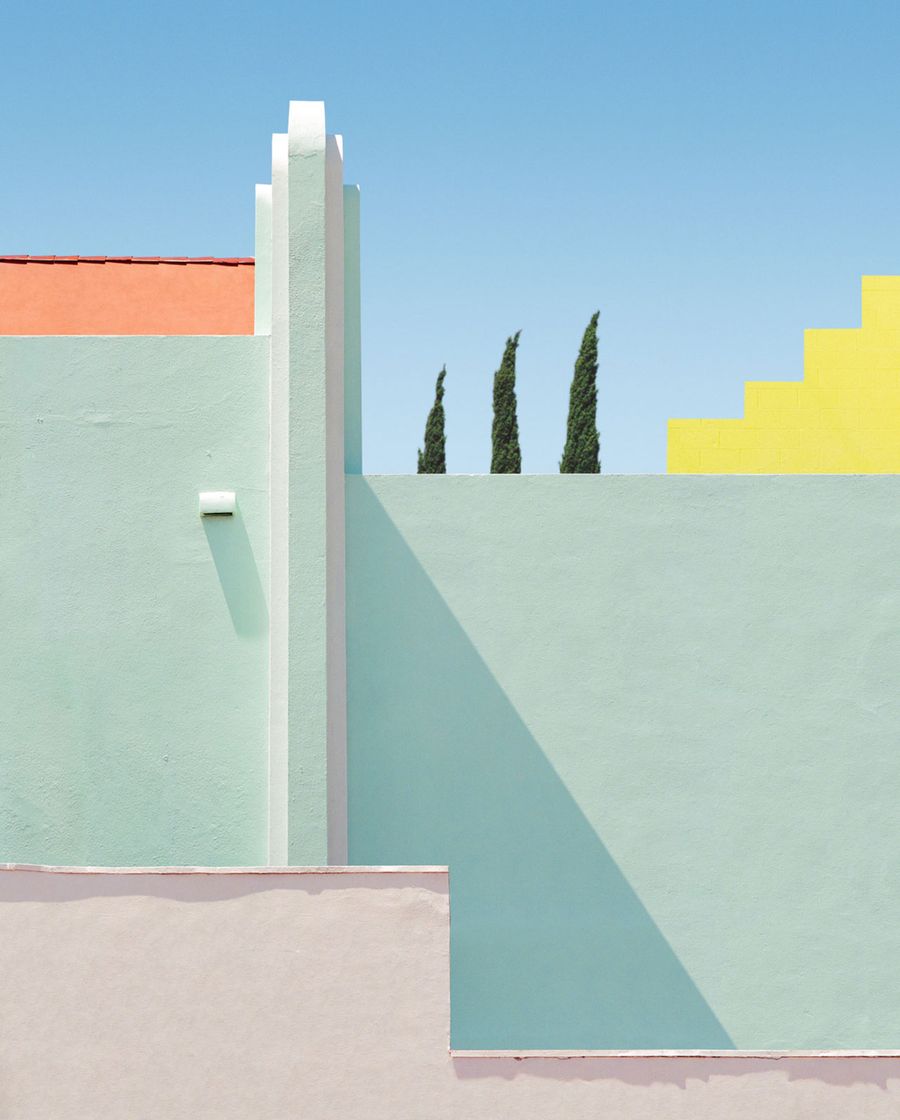
George Byrne. Post Truth, 2018.
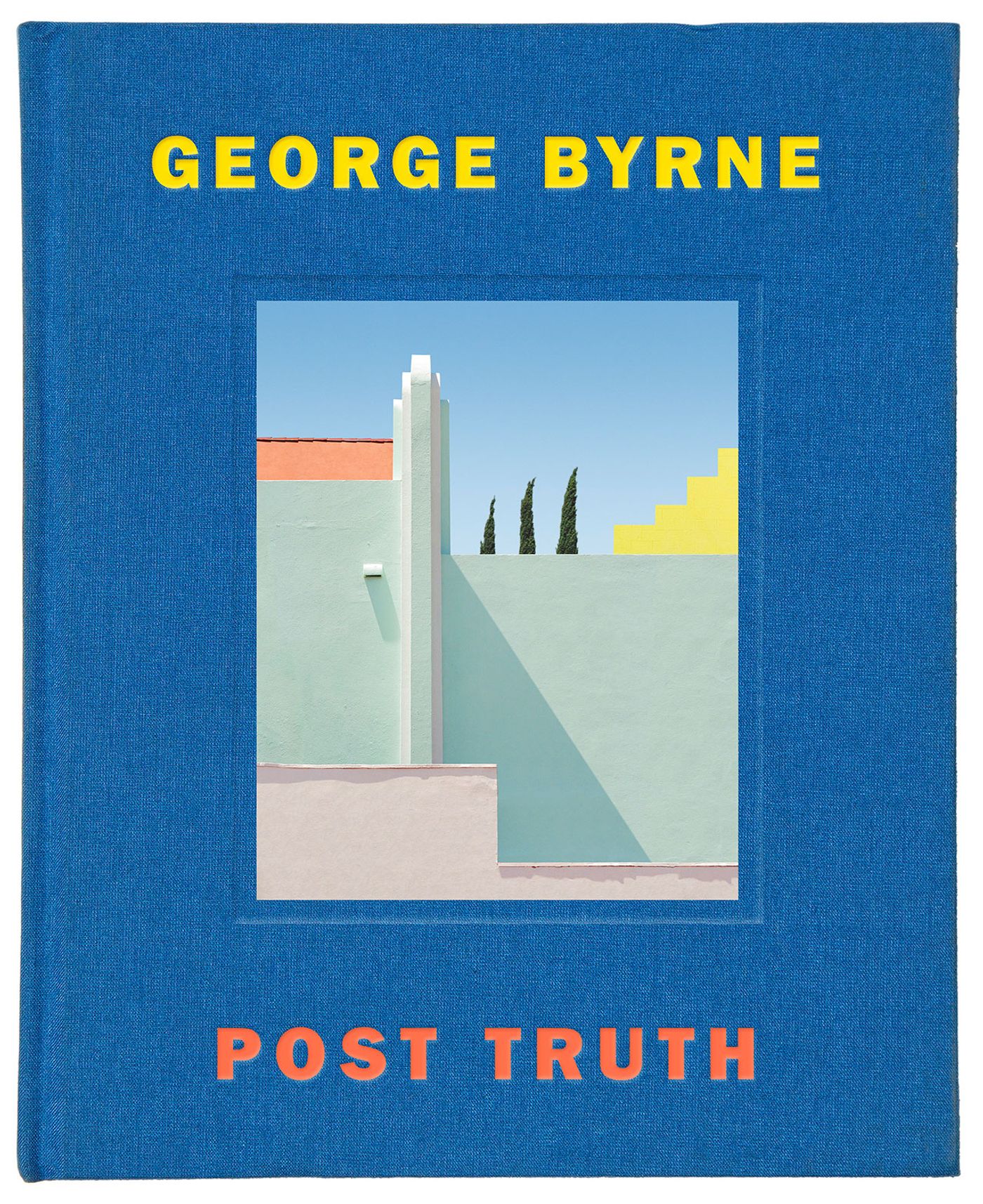
Book cover. Post Truth by George Byrne.
Five years in the making, Byrne’s “Post Truth” series is an ongoing love letter to his new hometown, numbering more than 150 images, 54 of which are showcased in a just released limited edition monograph. Borrowing from the clean, vivid clarity of modernist painting and underpinned by the city’s distinctive pastel colour palette, Byrne’s photos transform banal, everyday scenes into captivating, pristine dreamscapes. The release of Byrne’s book is accompanied by a pop-up exhibition in Los Angeles that runs until the end of the month and features 18 large scale works curated by Margot Ross. Yatzer recently caught up with the Byrne to talk about the Post Truth series, his practice, and his love affair with Los Angeles.
(Answers have been condensed and edited for clarity.)

George Byrne. Pink Awning with Orange, 2018.
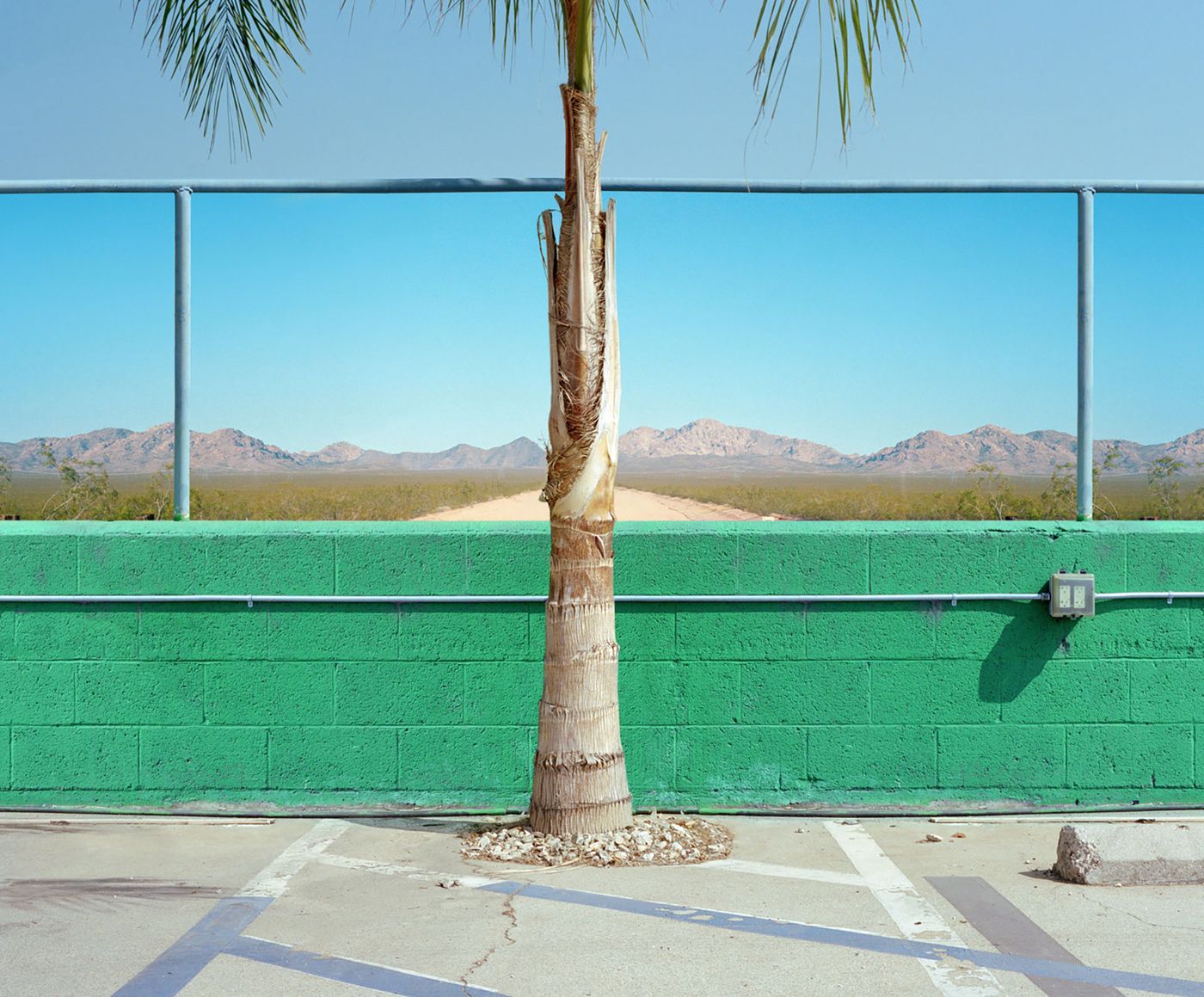
George Byrne. Desert Pit Stop, 2018.
How did the Post Truth series come about? What was the impetus behind it and how did it evolve?
The seed of the Post Truth series was planted the day I moved to Los Angeles in 2010. I had an immediate reaction to the landscape here – there was a mystery and beauty in it that I couldn’t make sense of. I was immediately reminded of the work of Ed Ruscha, Richard Diebenkorn, Lewis Baltz and other LA artists who managed, in very different ways, to make the landscape of California the backbone of their work.
So, rather impulsively, I started taking lots of photographs. I was trying to work out how to capture the essence of what I was seeing and feeling in this new alien landscape. The evolution of the work was driven by discovery and repetition. My work was also shaped by the printing practice itself; around the same time as I was landing upon my style, there were great tech leaps being made in the world of digital archival pigment printing. Pigment print quality was getting better and more detailed and offering a solid alternative to the traditional C-type colour image. Once I started using this new technology, and seeing how beautiful and painterly the prints looked on a large scale, I was further inspired to really embrace the block colour work that I was doing. I began to take the photos with this new print medium in mind.

George Byrne. East Hollywood Carpark, 2016.

George Byrne. Blue Awning with Yellow, 2017.
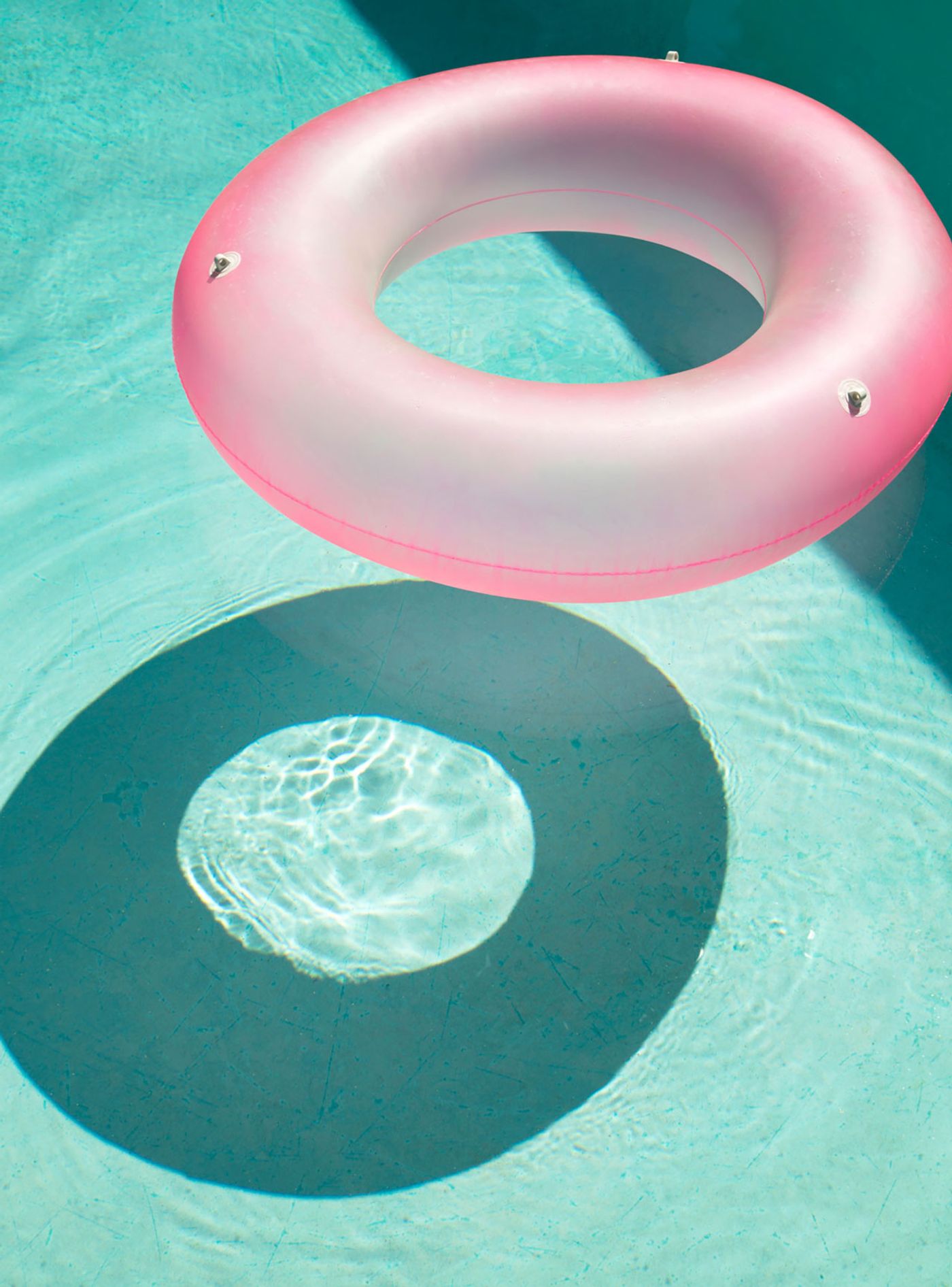
George Byrne. Hotel Pool #1, 2015.
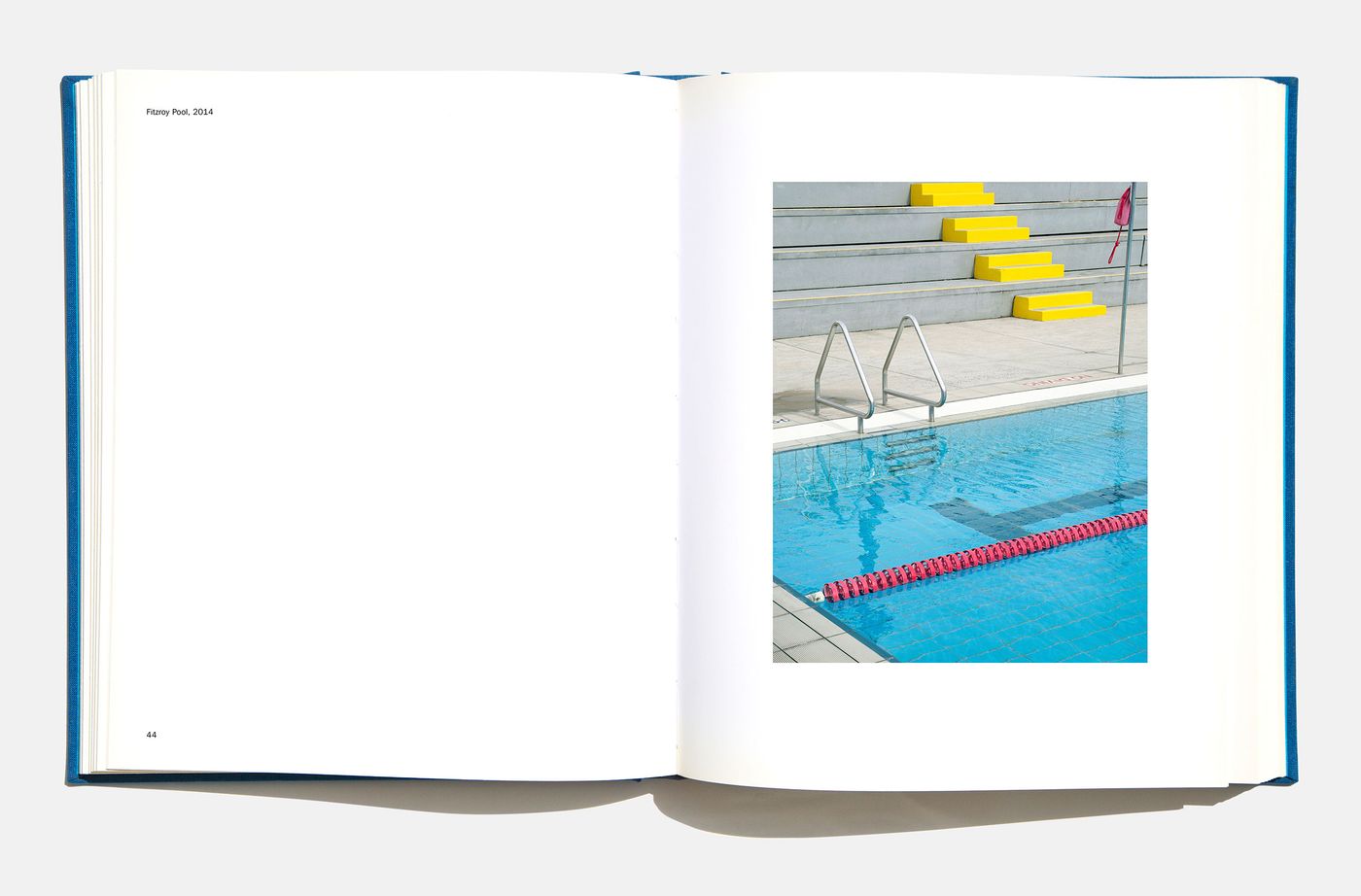
Book spread. Post Truth by George Byrne.

George Byrne. 99c Culver City, 2016.
What is the significance of the monogram’s title? Does ‘Post Truth’ imply the subjective nature of perception?
Yes, initially that was the intention. The subjective nature of perception broadly but also the subjective nature of photography itself. My work is part of the shifting narrative of what photography actually is and what it can be. Photography is no longer just a medium for recording reality; it’s more malleable than that. I think my most interesting and original work is that which suspends the viewer somewhere they aren’t used to being – both visually and conceptually.
Do you actively scout for locations or do you photograph places you happen to pass by?
I tend to shoot the locations that I get to know well by accident, as they are the ones that I see the most under different conditions, i.e. different seasons, different times of day, etc. Often, when I set out on a day of taking photographs, I get nothing, and then the next morning on the way to the dry cleaner I’ll take five rolls. It’s a very inexact science!
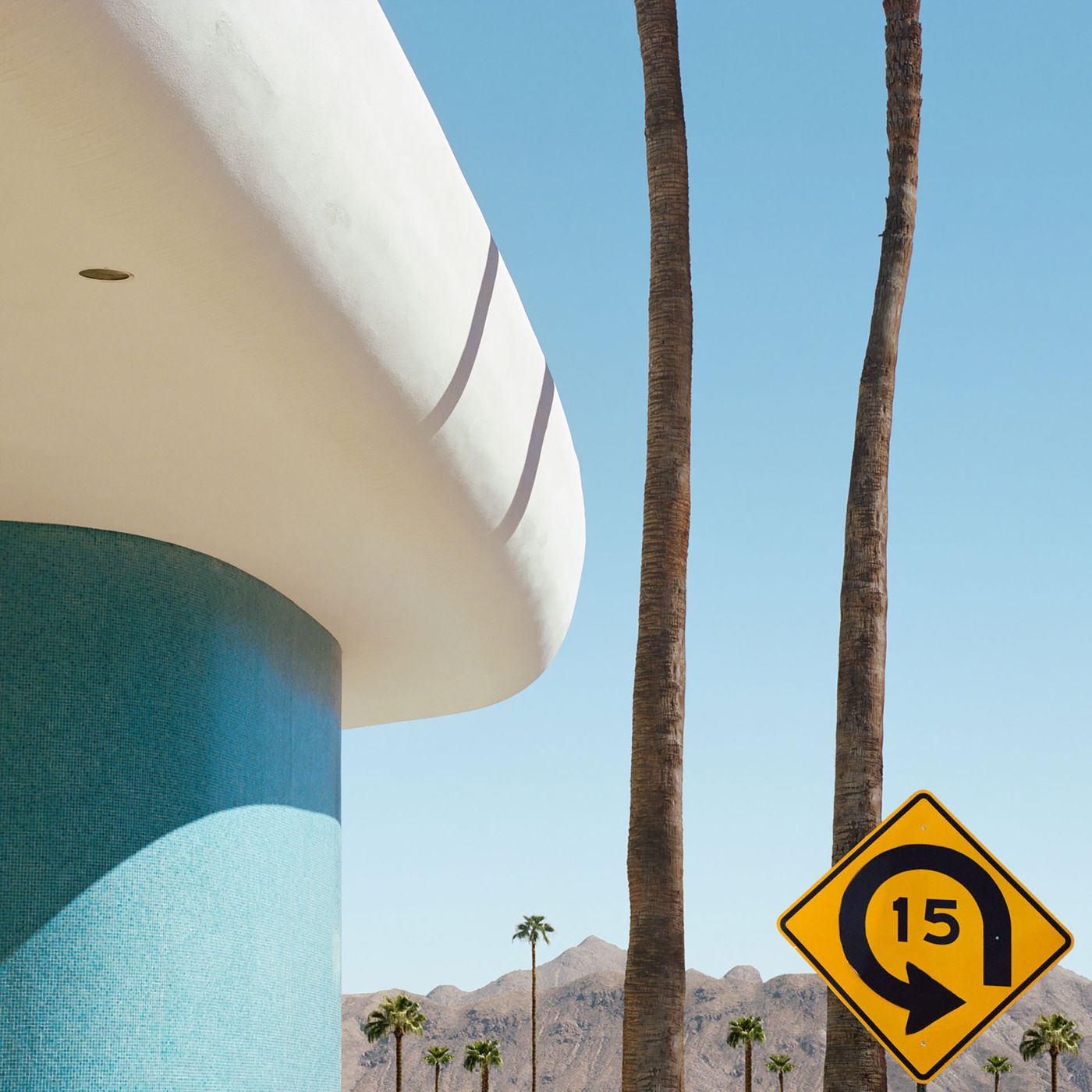
George Byrne. Bank of America #2, 2018.
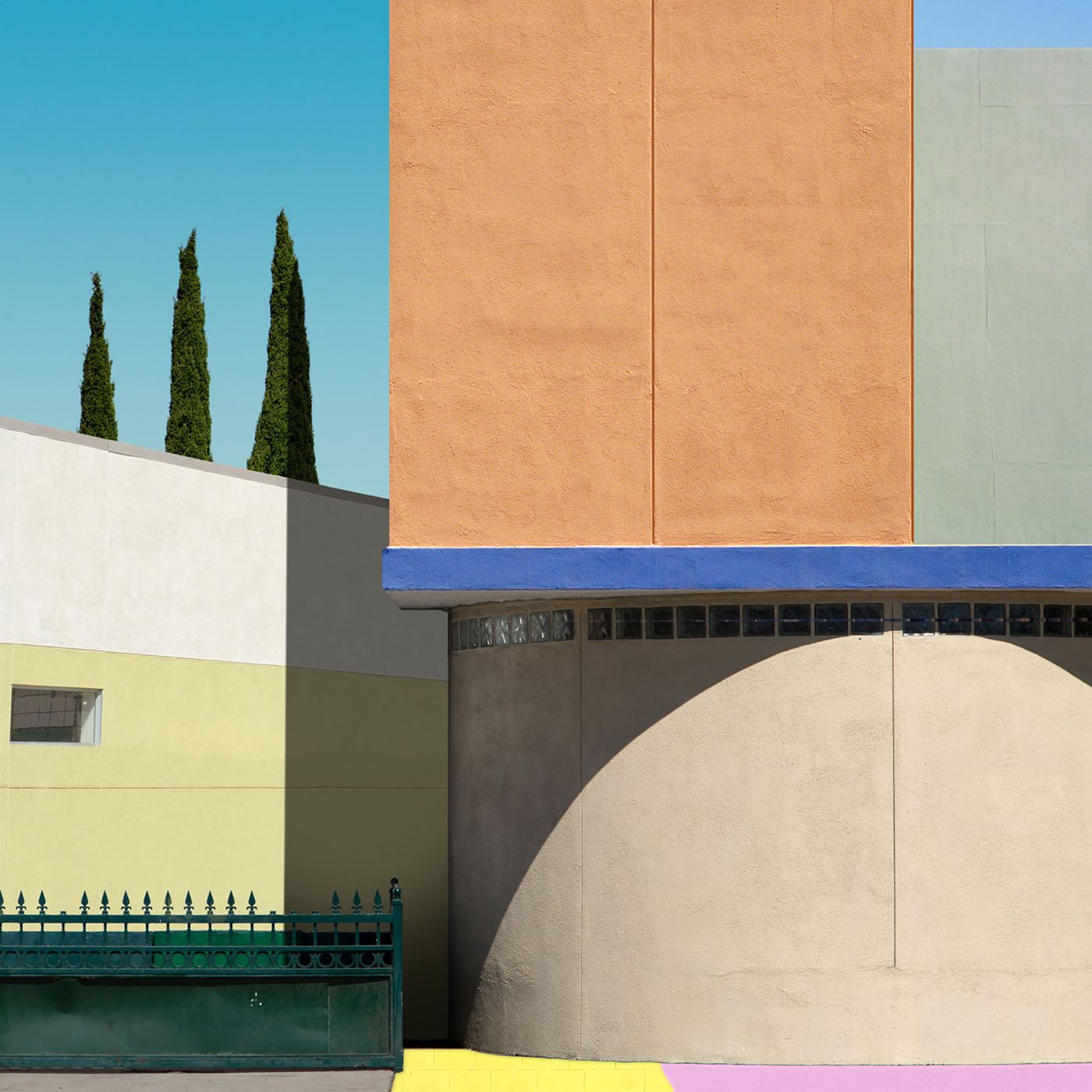
George Byrne. New Order, Hollywood Blvd., 2017.
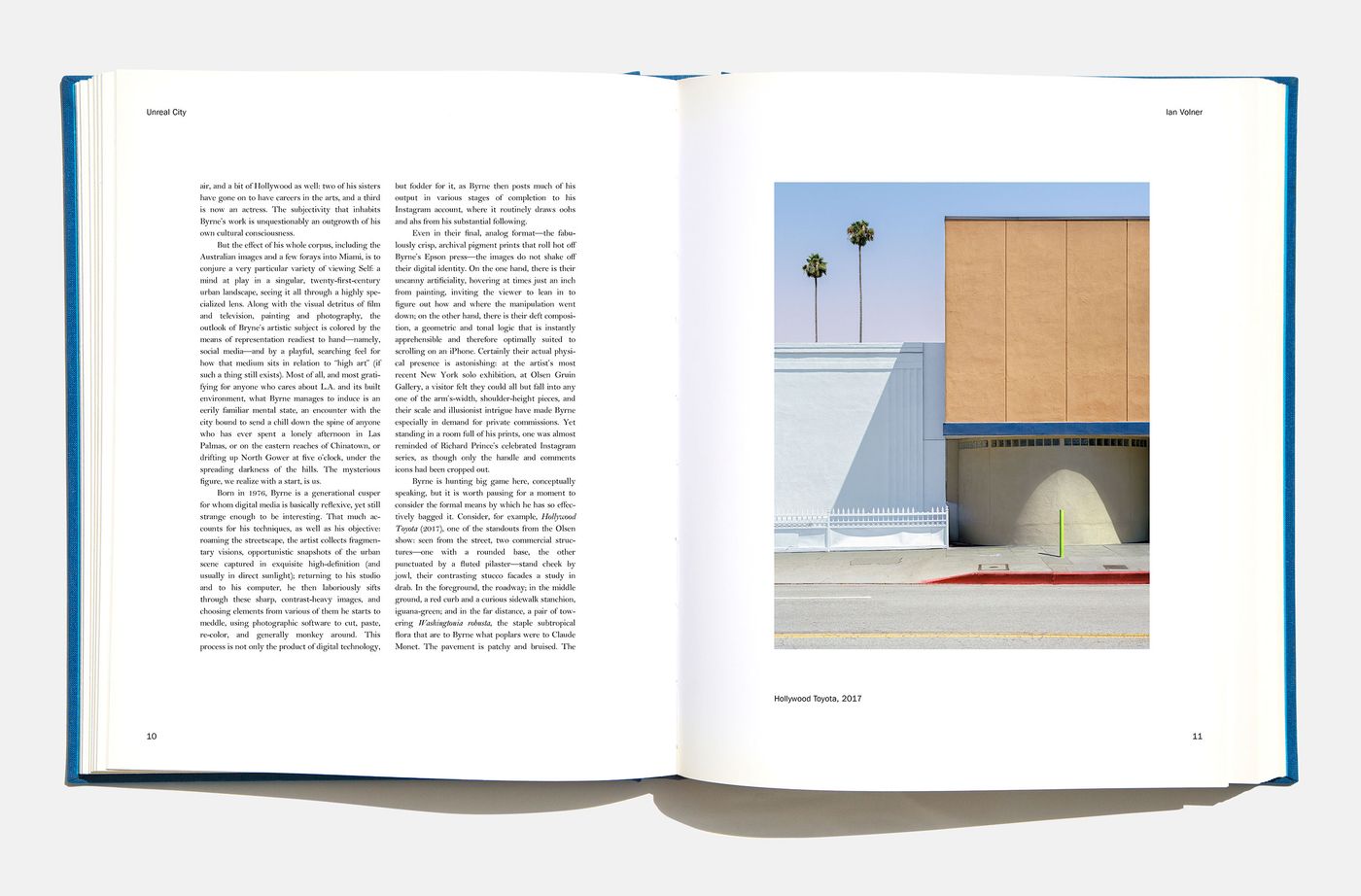
Book spread. Post Truth by George Byrne.
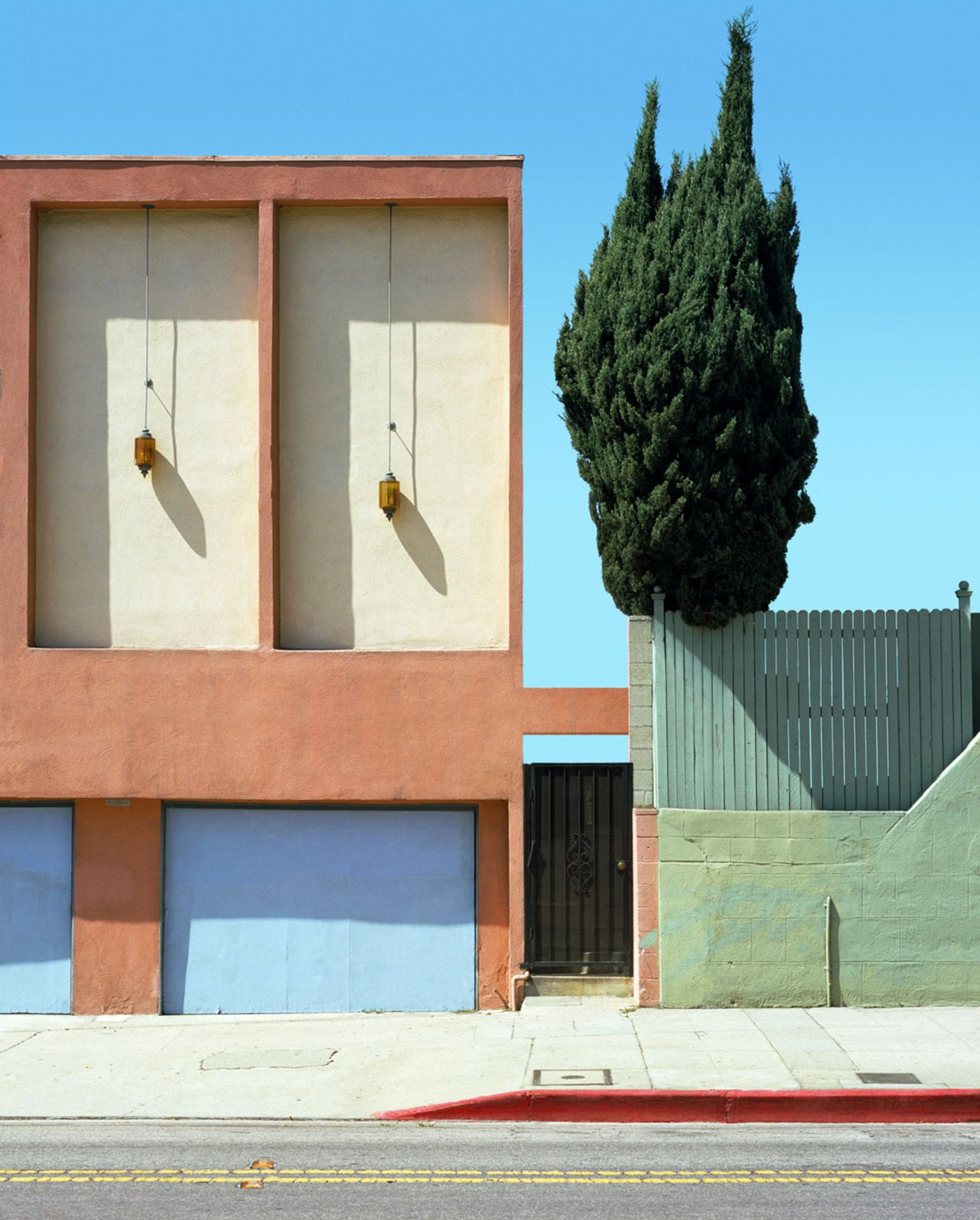
George Byrne. Virgil, 2016.
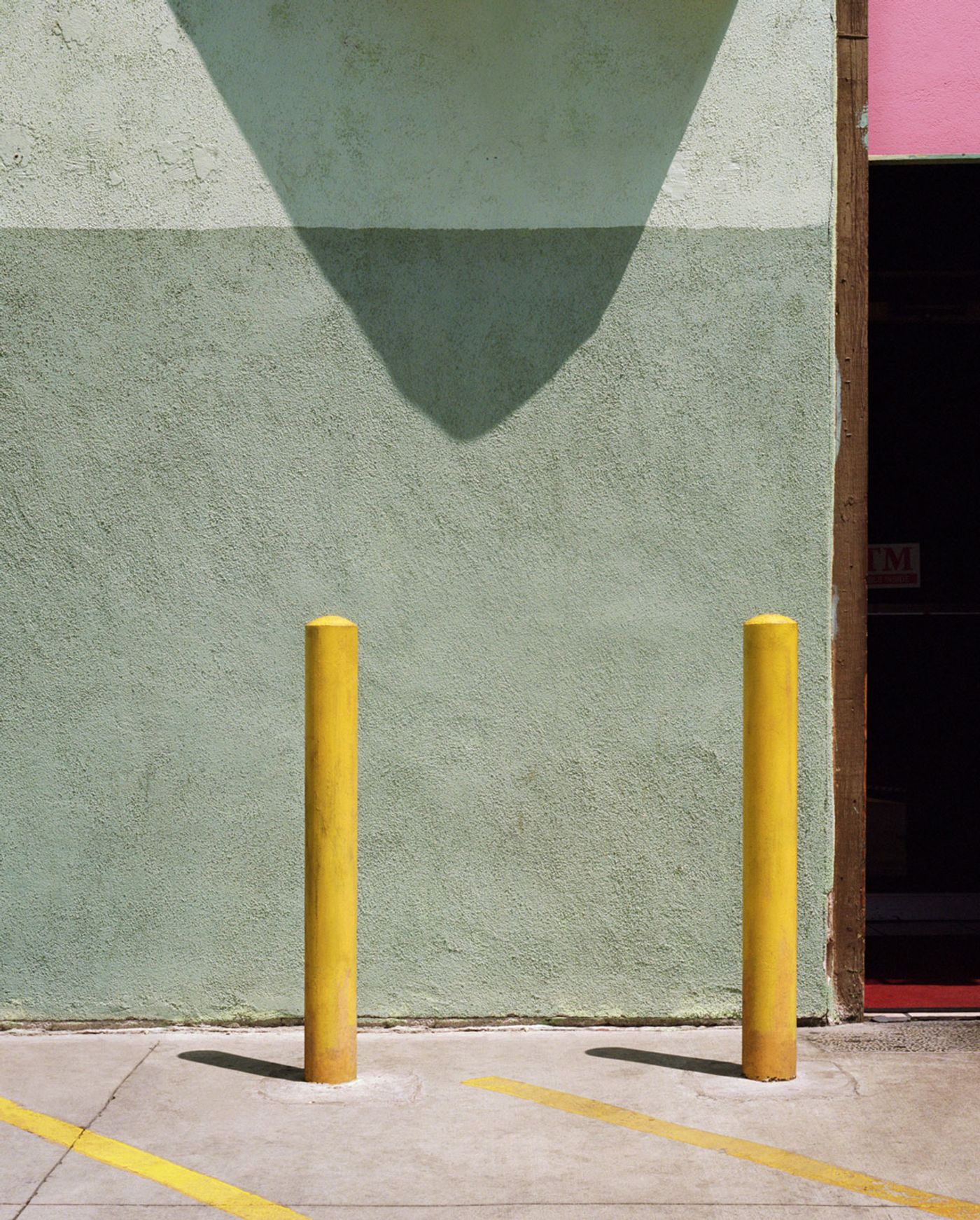
George Byrne. Temple St., 2015.
Take us through your creative process. Do you take time to frame your shots or do you intuitively photograph your subjects?
If I see something interesting, like a little vignette of colour/texture, I usually take my time. I use medium format film cameras, so the film and processing are expensive – I need to be selective! If the thing I have found is great, I’ll take many pictures and if there is just a single frame to be had, I’ll take that.
How important is light in your work? What time of day do you mostly prefer to photograph and why?
Light is critical for my work, it’s everything. A great location to shoot may only be great for 3 minutes of the day, as the sun moves through. I love to shoot around 9-11 am and 4-6 pm, when the sun is at a slight angle to the surface of the Earth.
Your photographs are characterized by a two-dimensional, graphic sensibility, a pastel colour palette and a modernist tendency for abstraction. How did this aesthetic develop?
Through trial and error really. I just worked hard and took thousands and thousands of pictures and practiced.
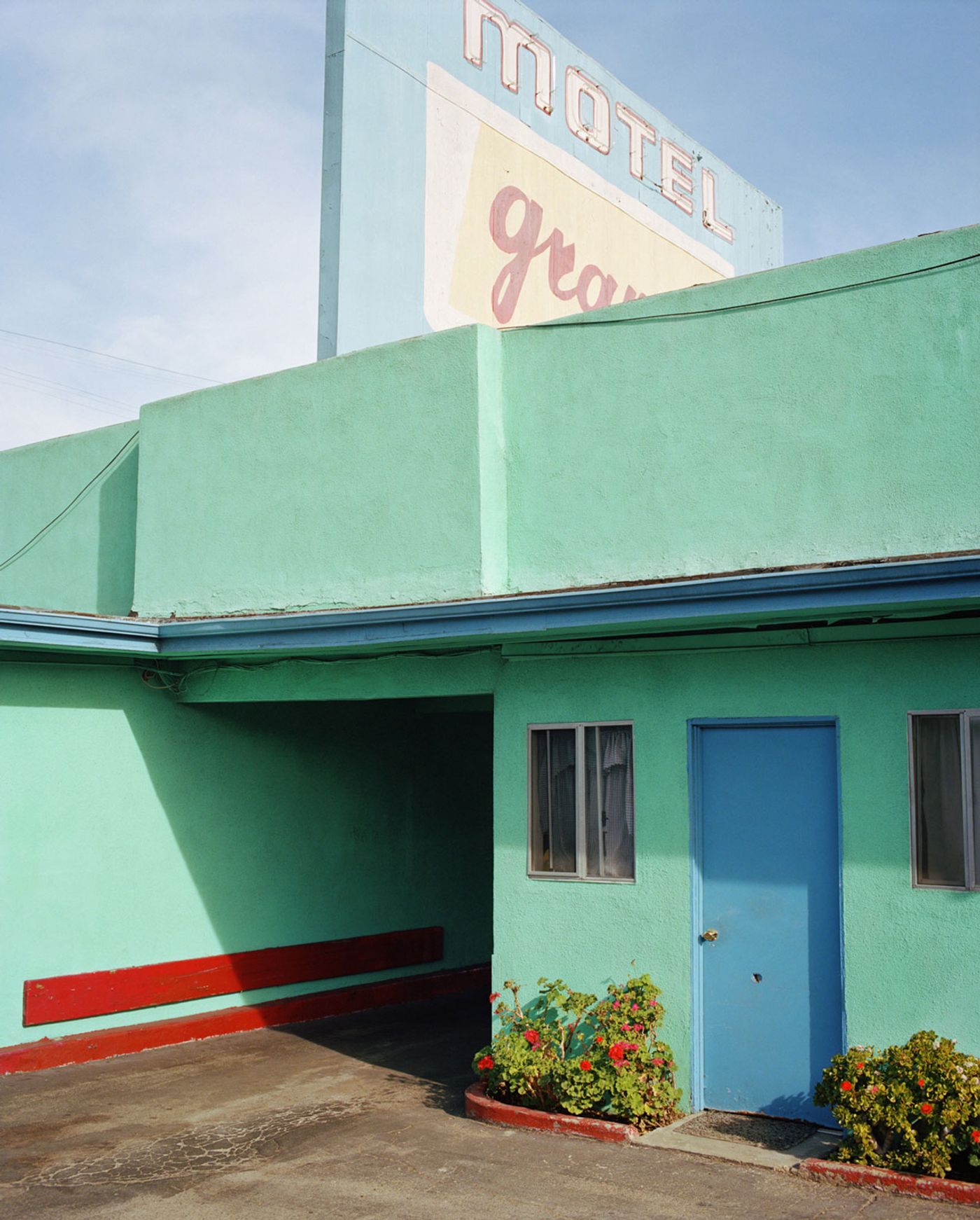
George Byrne. Motel Grand #2, 2014.
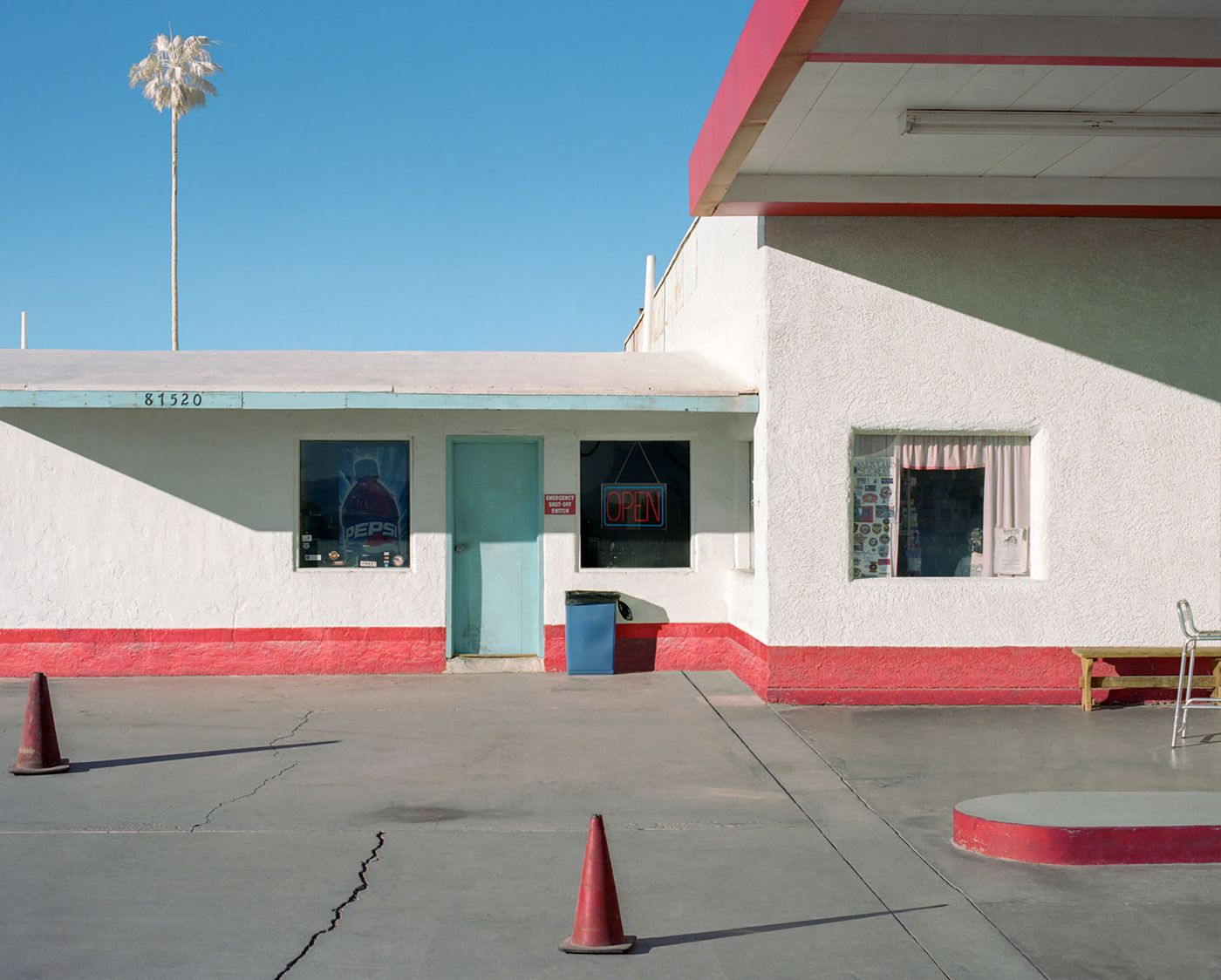
George Byrne. Gas Station, Route 66, 2018.

George Byrne. East Hollywood, 2018.

George Byrne. Ace Hotel, Sth Broadway, 2015.
Which artists have influenced you as a photographer?
Lois Baltz. Matisse. Patricia Treib. Mondrian. Stephen Shore. William Eggleston. Richard Avedon. Andreas Gursky. Davis Hockney. Nathalie Du Pasquier.
You have a talent for transforming non-descript, overlooked or banal spaces into captivating visuals. Is this your way of seeing the world through rose tinted glasses?
Maybe. Although that wasn’t my intention; the locations I explore called out to me to begin with, I never went looking for them. It was a calling from the start, I could have ignored it, but I chose to dive into it and give it everything I had.
You have been photographing Los Angeles for quite a few years now. Which traits do you find most attractive? What do you love the most about the city and what do you dislike?I
love the open space here. When the roads aren’t congested, I really enjoy traversing vast swaths of the city on the huge elevated freeways. I LOVE the light. I love the diversity; it’s a kaleidoscopic of humanity here. My biggest issue with the city is the poverty and the mental illness that plays out on the street. It’s absolutely everywhere and getting worse every year. It’s so disgusting and unacceptable that a city with this much wealth, allows human beings to rot on the streets. I don’t know how LA billionaires sleep at night, there is so much more that could be done.

George Byrne. Bankruptcy, 2014.
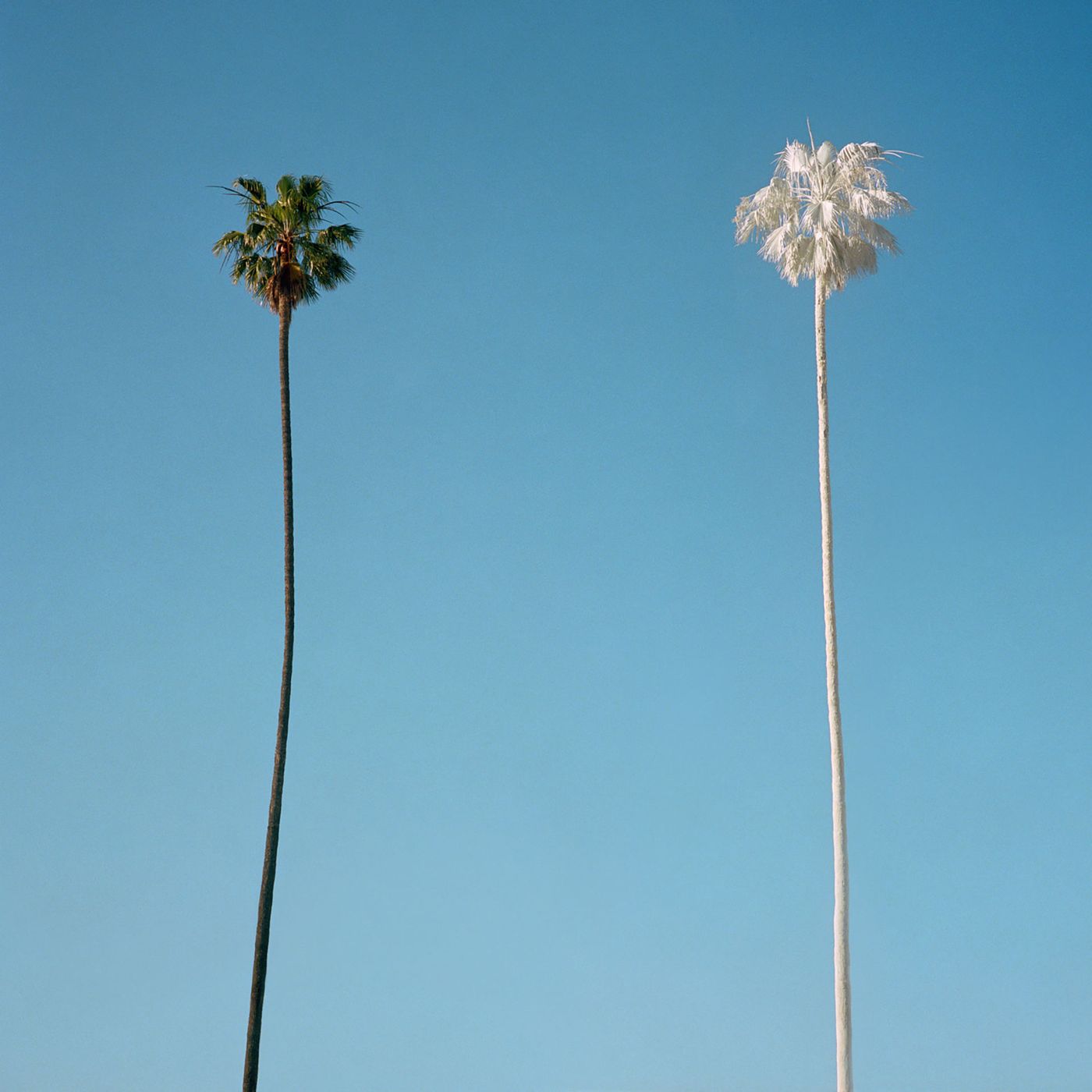
George Byrne. White Palm, 2015.
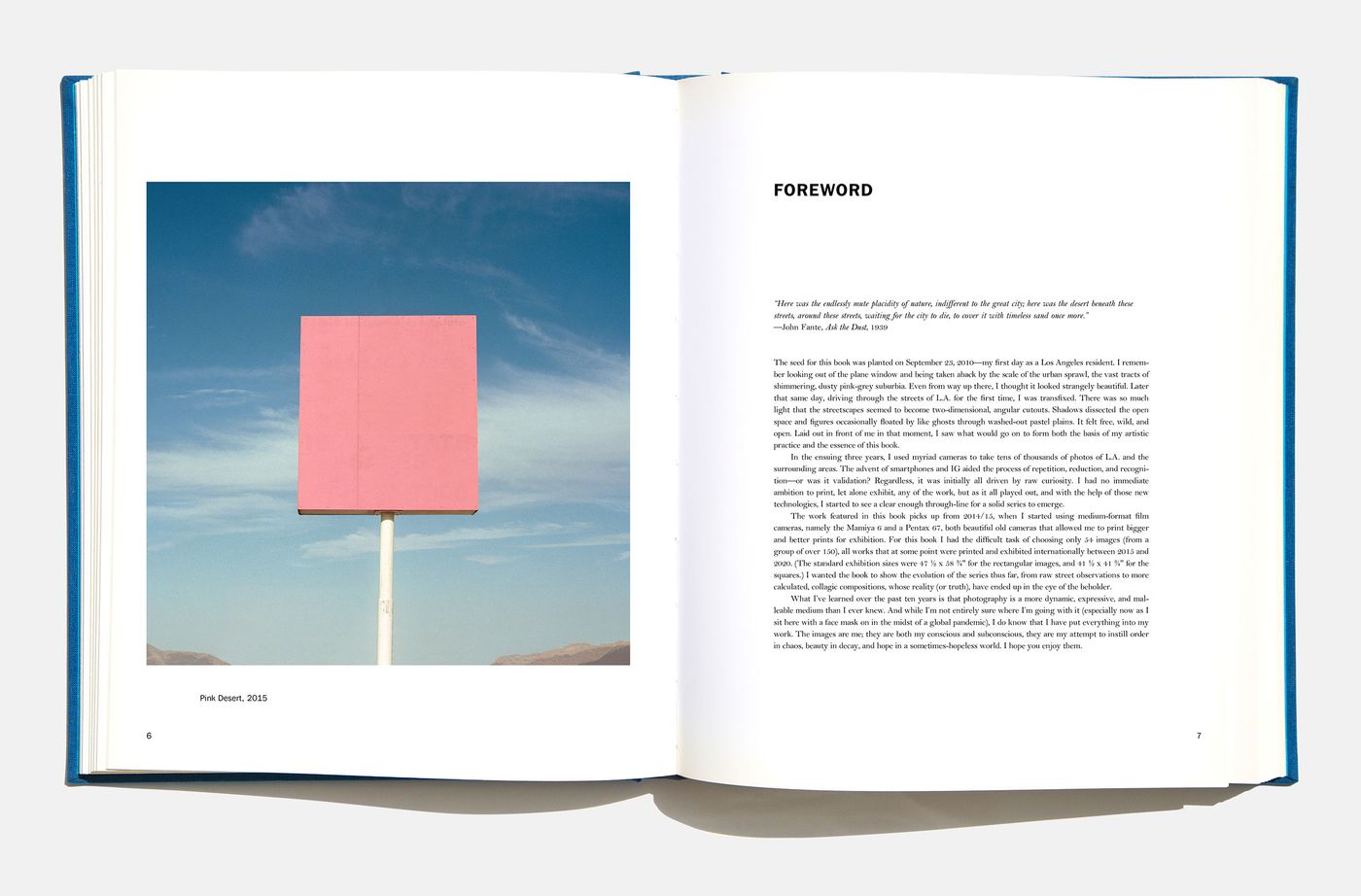
Book spread. Post Truth by George Byrne.

George Byrne portrait.